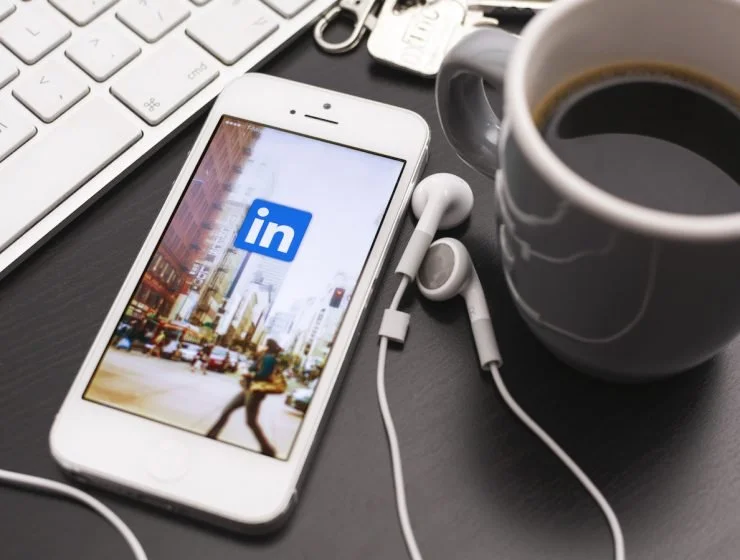LinkedIn: Your Headline
THE JANUARY JUMP: TASK 16
Here’s a challenge for you!
Can you sum yourself up in just a few words?
*Haven’t joined yet? Sign up now to receive the January Jump emails in your inbox*
Today’s Task
It is said that the Headline – the single line of text that appears directly underneath your name – is the most valuable field on a LinkedIn profile. It is certainly the most visible.
Not only does the Headline appear on your profile page, but it is also shown along with your thumbnail photo and name whenever you appear in search results (e.g. when a person searches for a keyword or job title). It also features in lists of suggestions created by LinkedIn’s algorithm, such as the “People Also Viewed” list. So it is likely that your Headline will be seen by people well beyond your current network.
Keep in mind that these people may be using LinkedIn for a variety of different reasons. Of course, there are headhunters and recruiters looking for candidates, but there are also journalists, conference organisers looking for speakers, clients and partners in your industry, and more. All of these people may have opportunities to help you in your career – whether that’s helping you to raise your profile, win a new client, or find a new job.
Your Headline may be the first, and possibly last, impression these people have of you. So it is essential that these initial few words work hard for you!
“What Should My Headline Say?”
In the past, the Headline simply showed someone’s most recent job title. It was a default field that LinkedIn created automatically, based on the job details provided in the profile.
If you work in a traditional field (such as law, accountancy or banking) and/or in a large organisation with a clear hierarchy of roles (e.g. Junior, Manager, Senior Manager, Head of), your Headline may still include your job title. After all, it is informative, and will be appropriate if you hope to continue in a fairly neat upwards trajectory with the same or similar employers.
But could it work harder for you?
The more modern approach is to use the Headline as a “free form” field, where you can give a more compelling description. You could add one or two keywords so that a person scanning a list of profiles can immediately understand your relevance. But it can also be adapted further, to be more helpful in achieving your career goals.
The best Headline for you will depend on your goal – e.g. do you wish to progress or return to work in the same or a similar role, or do you wish to change careers or industries?
Progressing, or Returning to Work, In The Same Career/Role
If you wish to progress in your current career, or to return to work in your previous job or a very similar one, then listing your most recent job title is a good start.
If you have had a career break, your LinkedIn profile should include a job listing which describes the reason for the break and sets out the appropriate dates. This ‘career break’ job title is obviously not the most useful Headline when you are looking to return to work. You may instead opt to show the job title you had immediately before your career break, ideally along with a suggestion or hint as to which industry or area you worked in.
Here is a simple example. Take a job title (“Senior Brand Marketing Manager”) and add a few more words to pin down the area of experience or specialisation (“with Global FMCG Experience”). If someone is looking for a Senior Brand Marketing Manager with FMCG experience, then they are more likely to click on the thumbnail to view this person’s full profile.
Changing Careers, or Returning to Work in a New Role
If you were, say, a lawyer in a professional firm, but you wish to return to work in a different capacity – perhaps into an in-house legal role – then it would be more effective to write a Headline that allows for that interpretation.
For example, a Headline of “Corporate Lawyer at XYZ” is not likely to attract much interest from browsing recruiters or employers seeking candidates for in-house roles. However a broader Headline might – e.g. “Commercially-Focused Lawyer, IT/Tech Sector Experience”.
Without mentioning that you are looking for a different role, and without specifying what that role might be, you should aim to create a Headline which hints at what experience or skills you would bring to your next career/role.
Sometimes people are looking at a wide range of possible next roles, or they are not yet sure what type of role they want, and for these clients I usually suggest skipping the job title altogether and instead describing their experience in a generalised way.
Include Your Brand
It may be possible to include one of your brand words (from Task 11) in your Headline. It is a fine balance, keeping the Headline punchy while also making it informative. Experiment a bit and see if adding a brand word improves your Headline.
Other Factors To Mention
Depending on the circumstances, the following details could well be worth including in your Headline:
– Your current location, if it is not obvious from your profile and recent jobs
– Where you have worked – e.g. EMEA experience
– Languages spoken, if languages are highly relevant for your role or industry
– Any important skills, accomplishments or in-demand expertise that you wish to market e.g. Speaker or Author.
Researching Headlines
If you are struggling to formulate your Headline, try searching LinkedIn using your chosen words or phrases, or your recent job title. Seeing other people’s Headlines in action may give you some clues as to how to write your own Headline or, alternatively, may highlight overused or ineffective words and phrases that may be best avoided.
Don’t shy away from being more progressive than your colleagues, especially if you work in a more traditional role. Many of your peers won’t yet have realised how a strong Headline can be highly effective.
As a final step, before you finalise any Headline, ask a few friends or colleagues to check your draft version to make sure it makes sense!
Once you are happy with your Headline, don’t do anything with it just yet. Simply save it, ready for tomorrow’s Task.
Stay tuned! Tomorrow you will pull all the pieces of the January Jump puzzle together to create your perfect LinkedIn profile. It’s a Task not to miss!
Find out more about the January Jump, and see previous tasks, on the January Jump homepage.
Join in the January Jump Conversation
Ask a question or let us know how you are getting on with your January Jump.
If you would rather ask your question privately, email us with the word “private” in your email title. We aim to answer all questions publicly (because someone else will probably be wondering the same thing) but we can do so without using your name.
Sorry we cannot provide legal advice or bespoke career advice as part of the Jump.
Please contact us separately if you would like to enquire about these services.
Already joined the Jump? We’re delighted to have you on board. Please ensure you have confirmed your email address (you should have received an email from us, which you need to click).
How about inviting some friends to join you? Research shows that people who talk about their goals are much more likely to achieve them. Signing up for the Jump is a fantastic first step. But what about inviting a friend or two to join you – to nudge you along and help celebrate at the end?
Want to share the Jump with your workplace or network? Great! Please get in touch and we’ll help you to spread the word.
















